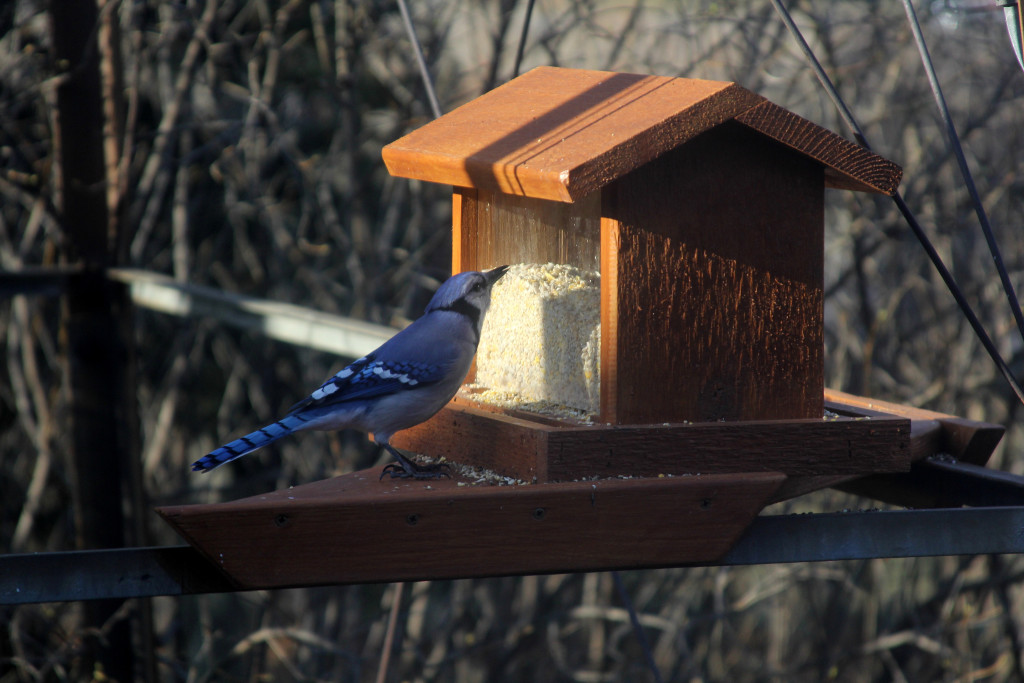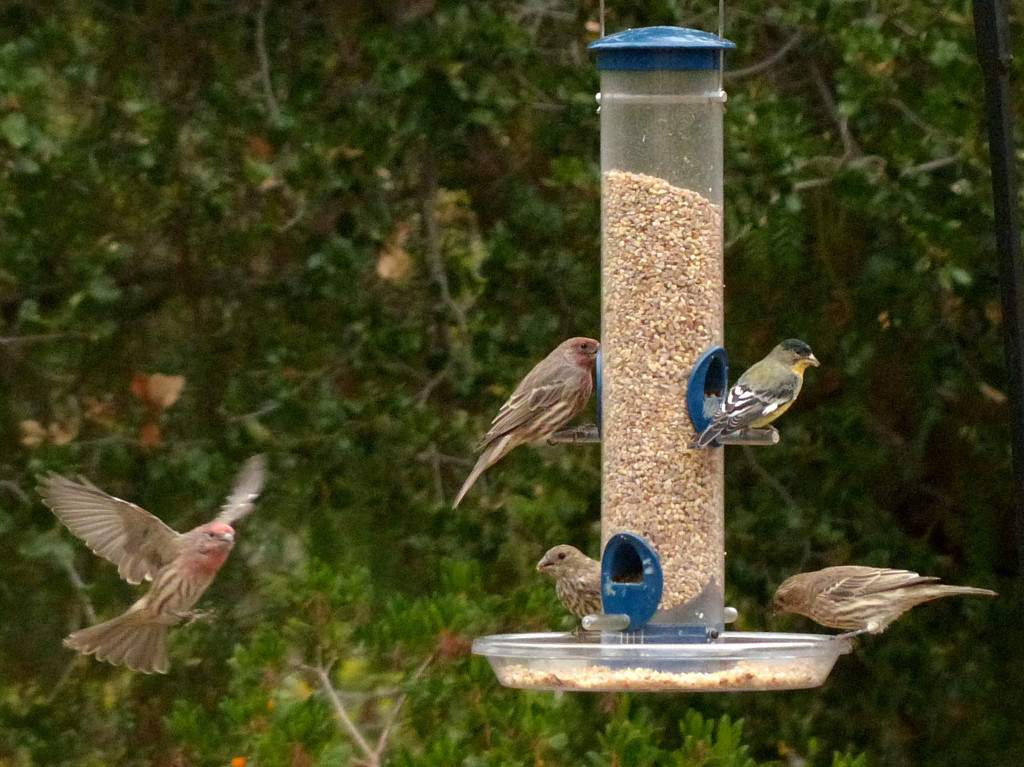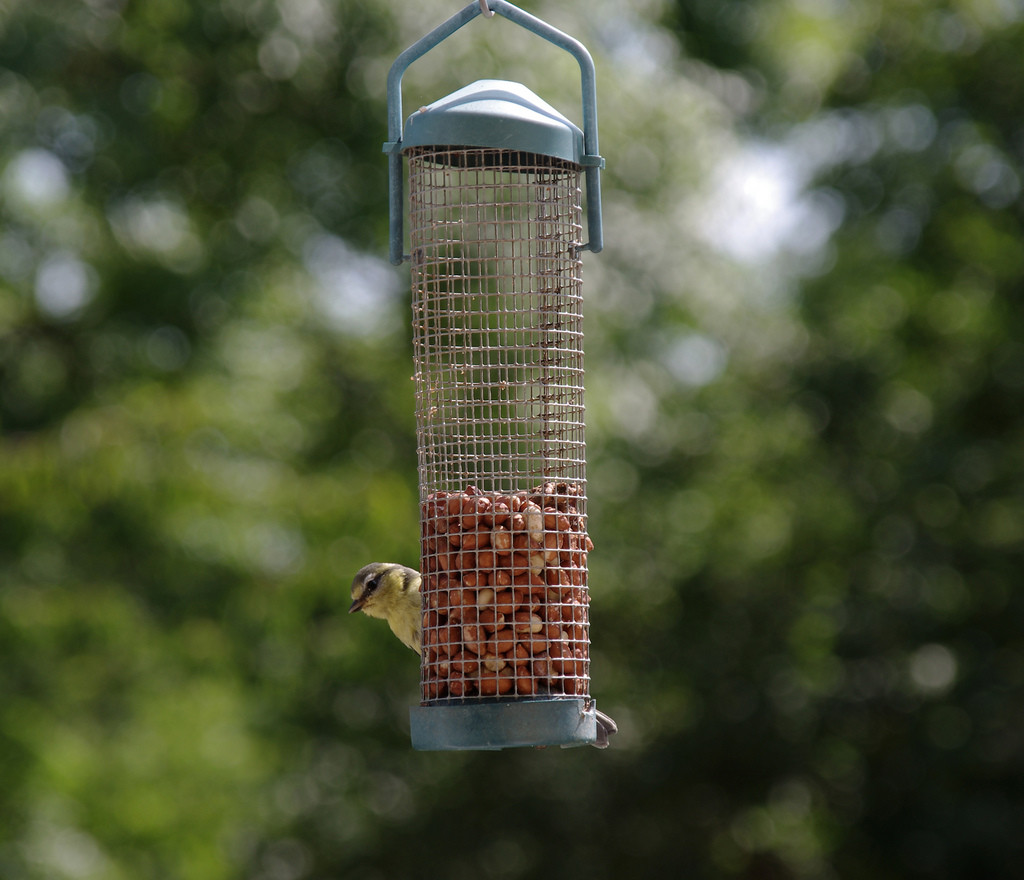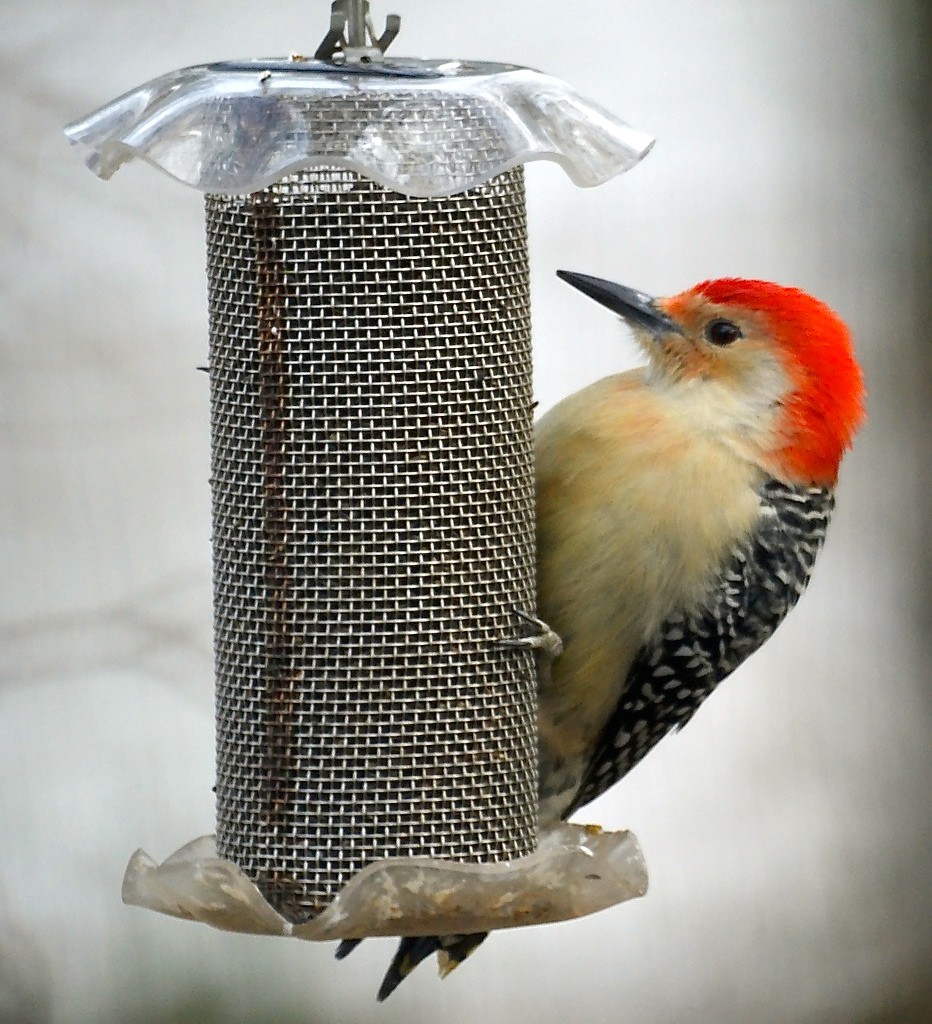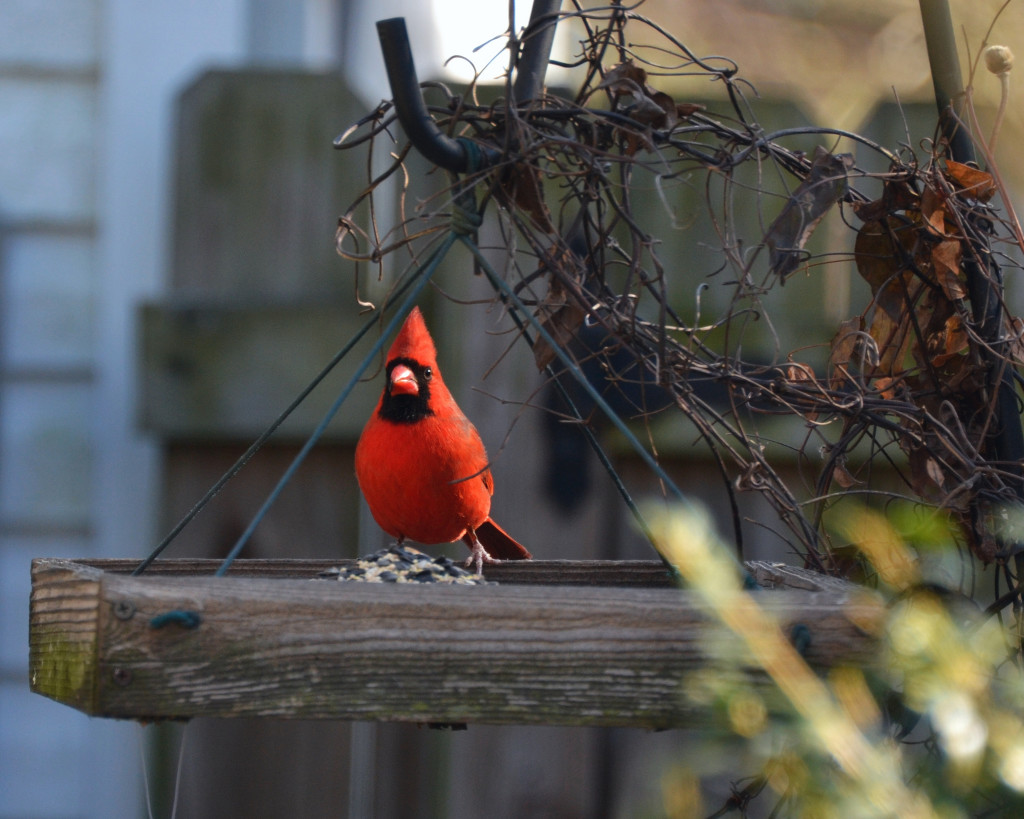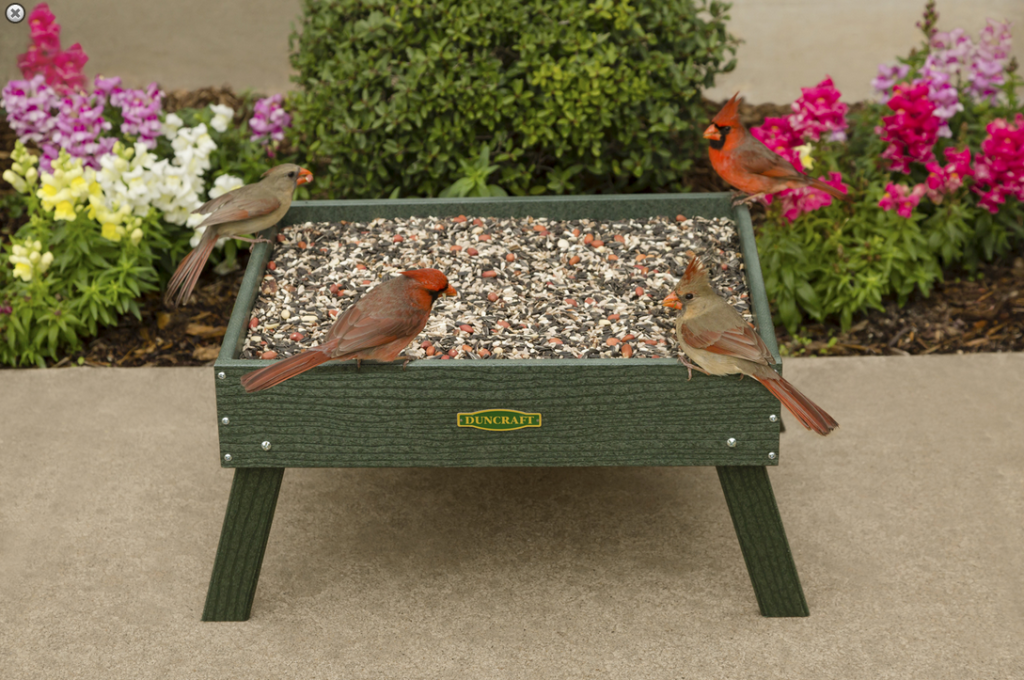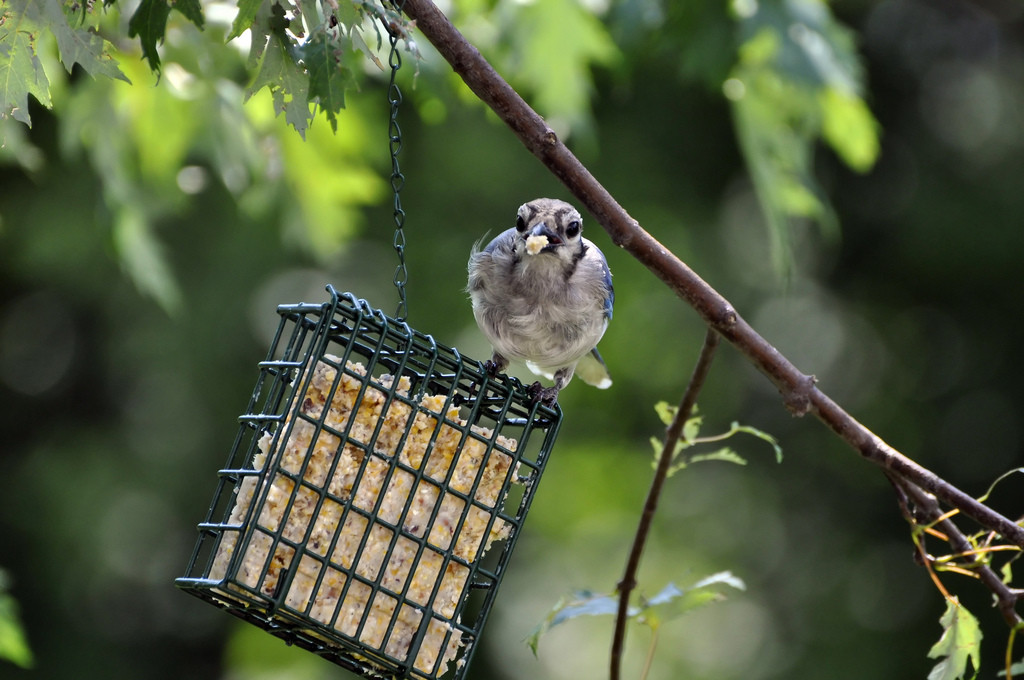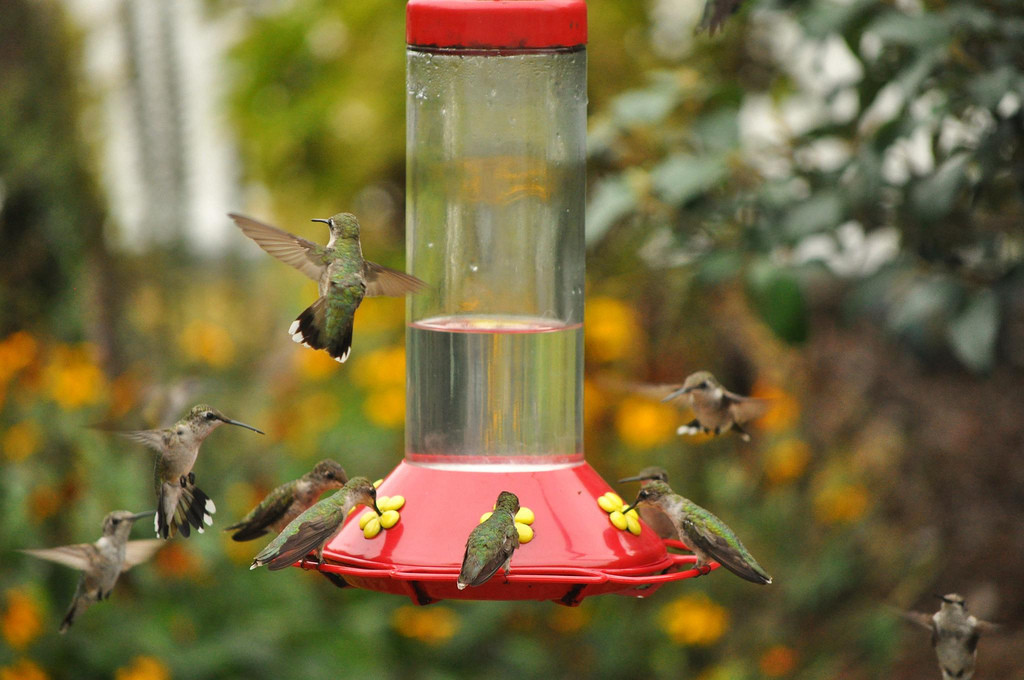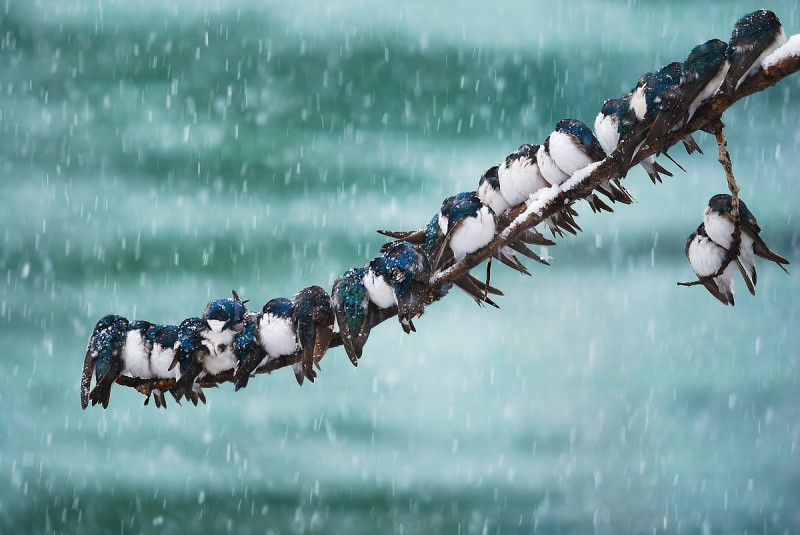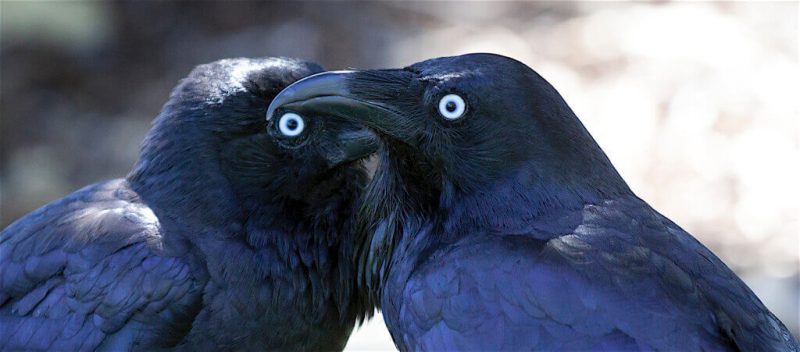If you want to attract birds to your yard quickly, bird feeders are the answer. If you aren’t already, you might even become a birdwatcher: birdwatching is second only to gardening, the most popular outdoor activity in the U.S.
A banquet of seeds and suet draws birds out of the protective cover of trees and shrubs like nothing else. In summer, parents will guide their fledglings to the feeders, where you can watch them being fed. Hang a thistle feeder right outside your window, and you’ll soon be watching finches just inches away. In winter, many different species will gather at your feeders. When snow covers the ground, your feeders may make the difference between life and death for some birds.
Bird feeders aren’t all alike. Aside from the impressive and sometimes beautiful designs you’ll find on the market, each feeder is meant to dispense a particular category of food and will draw different species.
Do you want to feed finches? Then, a thistle feeder is for you. To attract woodpeckers, you’ll do well with a suet feeder. Ground-feeding birds, like Mourning Doves, sparrows, and juncos, will appreciate a screened platform feeder, which keeps seeds dry and clean. A tubular feeder with large ports will accommodate larger birds. Hang a nectar feeder to see hummingbirds and orioles. (Keep in mind, however, that you won’t attract species that don’t inhabit your area!)
Hopper feeders
Hopper feeders are often made of wood and have a holding chamber for seed, which is dispensed at the base through openings. Birds can sit on the base while eating them. They’re attractive but no challenge to squirrels wanting what’s inside. To discourage them, fill hoppers with safflower or thistle, which squirrels don’t usually favor. Safflower seed is attractive to Cardinals, chickadees, some grosbeaks, doves, sparrows, and others.
Hoppers are also available in metal, preventing squirrels from gnawing them. Some are designed so the seed ports, ordinarily open, will close when a squirrel steps onto the feeding platform. Black oil sunflower seeds are an excellent choice for metal feeders. They attract more species than any other type of seed because they’re high-fat, high-protein, and have a soft shell.
Tube feeders
Tube feeders can be mounted on a pole, with a baffle below, or hung from a support. They come in many sizes, have large ports for dispensing seeds, and perches for birds to sit on while they eat. Some come with a tray attached to the bottom to catch falling seeds. The tray also allows Cardinals and larger birds to sit on it and eat the fallen seeds. Use black-oil sunflower seeds to draw many different species. Birdseed mixes will work in these feeders, too, but the birds that appreciate these blends are mostly ground-feeding birds. Consider using a ground feeder for them instead. Also, there tends to be more seed waste as birds scatter it while searching for their favorite seeds within the mix.
Peanut feeders
Peanut feeders hold peanuts inside, but the mesh is open enough for birds to pluck pieces out. This method isn’t completely foolproof, but it does help to keep squirrels from taking way more than their share before birds get some. Woodpeckers, bluebirds, and finches are some of the birds that eat peanuts from wire feeders.
Thistle feeders
Filling a standard tube feeder with thistle will result in it just pouring out. Thistle feeders, instead, have openings that are just right for dispensing very tiny thistle seeds. Thistle (also called Niger seed or Nyjer) isn’t a thistle at all. It’s the seed of a plant native to Ethiopia and is heated to prevent germination, so you won’t find thistle plants growing under the feeder. Goldfinches and Pine Siskins love thistle. House Finches, Purple Finches, juncos, many sparrows, and Mourning Doves are other birds that eat thistle. Squirrels usually don’t.
Platform feeders
Larger birds, such as Cardinals and jays, appreciate a platform feeder. These feeders are made of plastic or wood, with a simple frame and a center made of screening material to allow rainwater to drip through. (Seed sitting in water quickly becomes mildewy and unhealthy.) Platform feeders are designed to hang, but some adhere to window glass with suction cups.
Ground feeders
Add legs to a platform feeder, and you’ll have a ground feeder. They keep seeds off the ground, clean and dry, for species that prefer to feed there. Scatter white millet on it for juncos, sparrows, and others. Cracked corn will appeal to doves, ducks, quail, and jays.
Suet feeders
Suet feeders are wire cages shaped to hold suet cakes. Designed for hanging, they’re attractive to insect-eating birds because suet is a high-protein food. Processed suet can be purchased at any store that sells bird seed. Many suet cakes also contain nuts and berries. If you use unprocessed suet, it will become rancid quickly in warm weather, so replace it often. Woodpeckers, flickers, and nuthatches are some birds that prize suet. Squirrels do, too, especially if it contains nuts and berries, but the wire cage keeps them out.
Oriole feeders
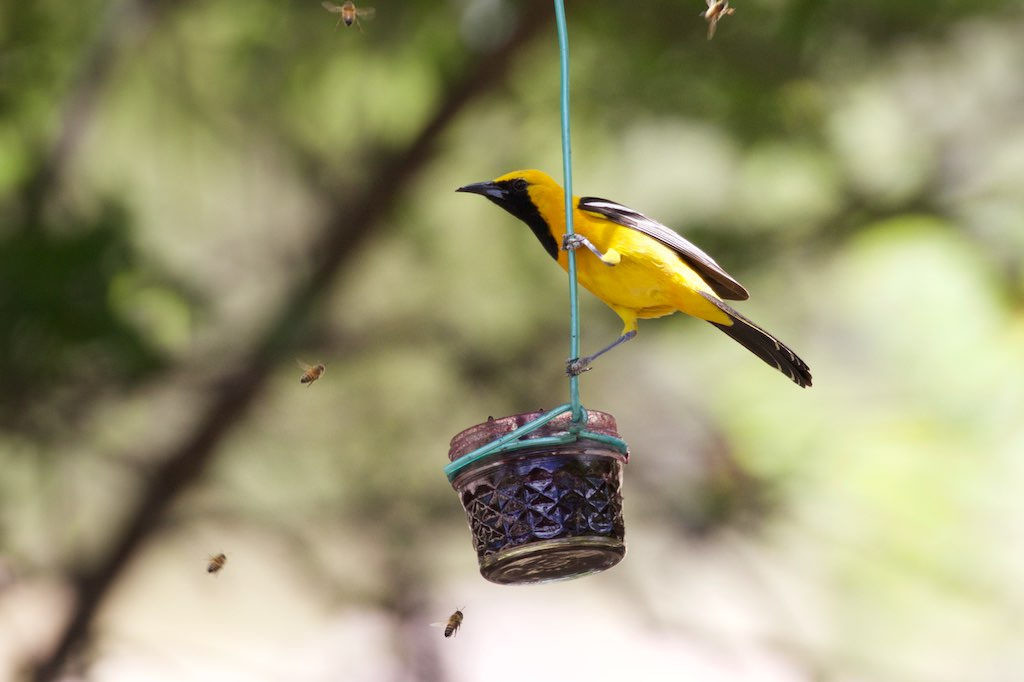
Hooded Oriole, Icterus cucullatus, on feeder holding grape jelly (HarmonyonPlanetEarth / Flickr; CC BY 2.0)
Orioles take nectar from just about any nectar-bearing flower. They’ll also sip sugar water at nectar feeders, provided the holes are large enough. They also like fruit, so you can combine the two by offering them grape jelly in an open container. Slide a juicy slice of orange on the hanging wire, and they’ll happily eat at that, too.
Nectar feeders
Hummingbird feeders are available in many attractive styles and sizes, all with one commonality: a receptacle that holds liquid and dispenses it through small ports. (Orioles also appreciate nectar but need feeders with larger ports.) Hummingbirds see colors, and red seems to be most attractive to them.
Once hummingbirds and orioles start to visit your feeders, you’ll want to take good care of them. The “nectar” you’ll prepare is merely sugar water. Mix one part sugar to four parts water (1:4). Boiling the mixture kills bacteria, which may help keep it fresh longer, but hot tap water or even cold water will dissolve the sugar pretty quickly. An easy way to prepare nectar is to measure sugar and cold water into a soda bottle, screw on the lid, shake it up, and leave it for a couple of hours. When the sugar is thoroughly dissolved, the nectar is ready to be used. Store any extra in the refrigerator for up to a week. Here are some important things to keep in mind when feeding nectar to birds.
- Don’t add red food coloring to the water. It isn’t necessary and can be harmful to them.
- Be sure to change the nectar in the feeder every three to five days, or sooner, if you see mold forming.
- Allowed to ferment, nectar can be deadly to hummingbirds.
- Never use artificial sweeteners, honey (which quickly grows mold), or fruit juices.
- Don’t apply insecticides or other agents around the feeding ports to deter insects;
use an ant moat instead.
Tips for feeding birds
- Keep birdseed dry. If you store birdseed outdoors, use a metal can to keep rodents out. If you store large quantities, check it regularly to ensure it isn’t moldy. If in doubt, throw it away, as moldy seeds will sicken birds.
- Inexpensive bird seed mixes, often found at discount stores, contain large quantities of filler seeds, such as milo, that most birds don’t like. Although it costs more, it’s better to buy premium seed mixes or quantities of individual seed types. Most birds like black-oil sunflower seeds—shelled or unshelled. The next-best all-around seed is white millet. Buy shelled millet, if possible. It costs more, but you’ll dispense half as much, and leftovers won’t germinate under the feeder.
- Put water out for birds, too. Even a shallow saucer of fresh water will be appreciated.
- Don’t feed any food containing chocolate to birds. It’s toxic to them.
Combating squirrels
No matter what type of feeder(s) you use, if squirrels live in your area, they’ll compete for bird seed. Most people wouldn’t mind feeding squirrels if they weren’t so greedy. Some put out squirrel feeders or scatter seed on the ground in a separate part of the yard, but this works only until the squirrels’ food is gone. You know where they’re off to after that!
So, try filling feeders with seed that doesn’t typically appeal to squirrels, such as thistle and safflower. Cardinals, chickadees, some grosbeaks, doves, and sparrows like safflower. Goldfinches, Pine Siskins, and Dark-eyed Juncos are among the birds that like thistle.
Or, try this: Mount the feeder on a post at least five feet above the ground and 10 feet away from tree branches and any other perch from which squirrels can launch themselves. Also, mount a squirrel baffle on the post to keep them from climbing up.
Or, hang your feeder from the eave of your house using a thin wire cut to about two feet long. If you see squirrels can reach it by jumping from the ground or a tree, then hang it higher or move it. If they slide down the wire from the roof, use a thinner wire. Picture-hanger wire may discourage squirrels if it’s .065 in diameter or smaller.
Also, there are many “squirrel-proof” feeders on the market. Read online reviews before purchasing, as some have proven more effective than others.
More reading:
No spring in the step of hungry spring birds
Birds and their favorite birdseeds
Food sources for wildlife
In your yard: 27 birds to look for
Cleaning bird feeders and birdhouses


